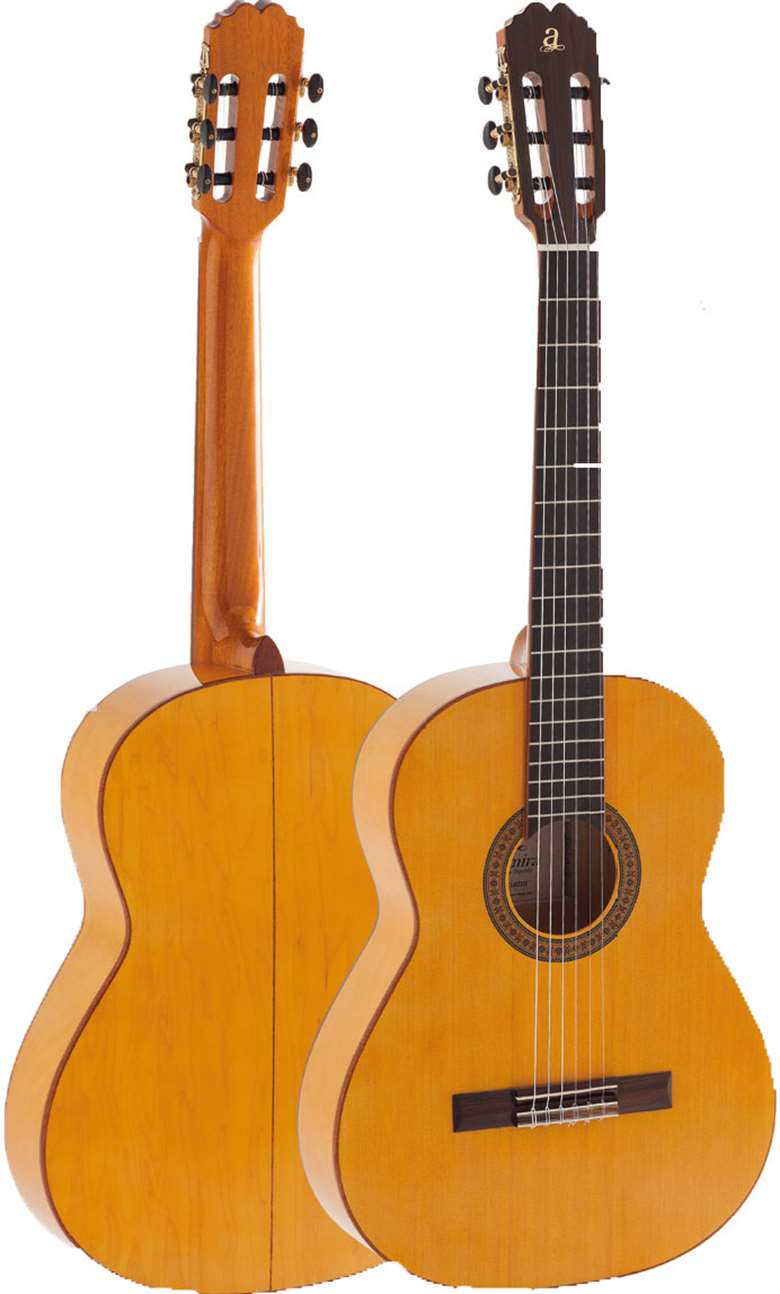Instrument Reviews: Admira Triana guitar
Al Summers
Wednesday, April 1, 2020
Al Summers reviews the Admira Triana guitar from Admira Guitars.

Admira Guitars have been respected by students and teachers for decades. Most of the range is made in Spain, with the beginner guitars (including the half and three-quarter sizes) designed in Spain and made in the Far East under Spanish luthier control. Recently returning to traditional Spanish neck design for their higher-end guitars, Admira continues a long tradition of offering reliable quality instruments under its own brand name.
Some of us older tutors will remember the Barnes and Mullins range of Spanish student guitars; indeed, these instruments are still distributed in the UK by Barnes and Mullins, once more bringing the Admira brand to the fore. Some retain familiar names (Diana, Almeria and Malaga) while others sport less romantic monikers more akin to European automobiles (A18, F4, for example).
Versatile design
The model under review here is the new Triana. On the surface a flamenco guitar, it is a versatile machine. It is not fitted with a protective golpe sheet; this is supplied separately rather than secured to the top, giving the buyer the choice of making it more purist.
A spruce top with maple back and sides gives a bright tone with a fast attack. A mahogany neck, kabukalli fingerboard and bridge provide a traditional look and feel. Sapele binding is a nice touch on an instrument at this price, showing attention to detail. Gold machines (rather than traditional flamenco pegs) work well and complement the guitar.
The main interest for tutors and their students lies in the body dimensions and other small details. While the scale length is the usual 650mm and the neck depth (23mm at the early frets, 25mm at the high frets) is also fairly standard, the 50mm nut is about 2mm narrower than most classical guitars. String spacing at the saddle is 60mm, a little wider than some other student classical models. The upper bout of the body measures 285mm across and the lower bout 374mm, a little narrower than Admira's F4 Flamenco and perhaps nearer to other full-size student classical guitars.
Where we see – and feel – some more radical departures from the expected norms are in the depth of the body: 80mm at the upper bout, perhaps 10 percent thinner than average. This may not seem huge but makes an enormous difference, enabling the player to feel a little closer to the front of the guitar – extremely useful for a younger or smaller musician who wishes for a full-size response and string length but a smaller body. One of my mature students also pointed out that this aspect made it comfortable for his portly figure.
Admira's F4 Flamenco (costing just over twice as much as the Triana) and the Triana are equally strong contenders. The F4 has a solid spruce top and maple back and sides. Admira's previous 1959 Flamenco model (which I used over many years for teaching classical guitar and for playing background music when I wanted a brighter sound) had sycamore back and sides – wood that grows easily and is good for tone. Unfortunately for that timber, many people prefer maple's more attractive look and colour. The F4's mahogany neck with rosewood reinforcement and ebony fingerboard are topped with gold lyre-style machines. It has perhaps a more mellow sound and is, unsurprisingly, louder than the Triana, but both guitars are easy to play with a quick action and are well set up for the buyer, generally ready to play straight from the box.
A good fit for students
The Triana, with its flamenco styling, may pass under the radar for some tutors but should not be overlooked. For the money, it is a superb instrument and will please many players, not only for ease of playing, but also for comfort. Moreover, the sound and feel will suit crossover musicians – the non-purist classical players who like a bit of jazz, folk or pop, as well as rock performers who enjoy adding a nylon string ambience to the mix.
A bonus is its robustness, as it certainly seems less delicate than some flamenco models. The UK recommended retail price is £239, so the final cost or street price will probably be a little less than this in many shops. This makes it a bargain for a well-made guitar with a professional air about it and a sound that will please many different types of guitarist.
Some may initially dislike the lack of rosewood back and sides, but we need to explore and adjust our eyes and ears to other materials. More lemony timbers are conventional for flamenco guitar manufacture, such as cypress wood. These not only have the shade of the fruit but share a hint of its refreshing scent – the maple on the Triana provides a similar delight to the eye – and are favoured on higher-end instruments (including Admira's F5). This mix of subtle progressive innovation with established and time-honoured traditions makes this model highly recommended.
www.admiraguitars.co.uk

